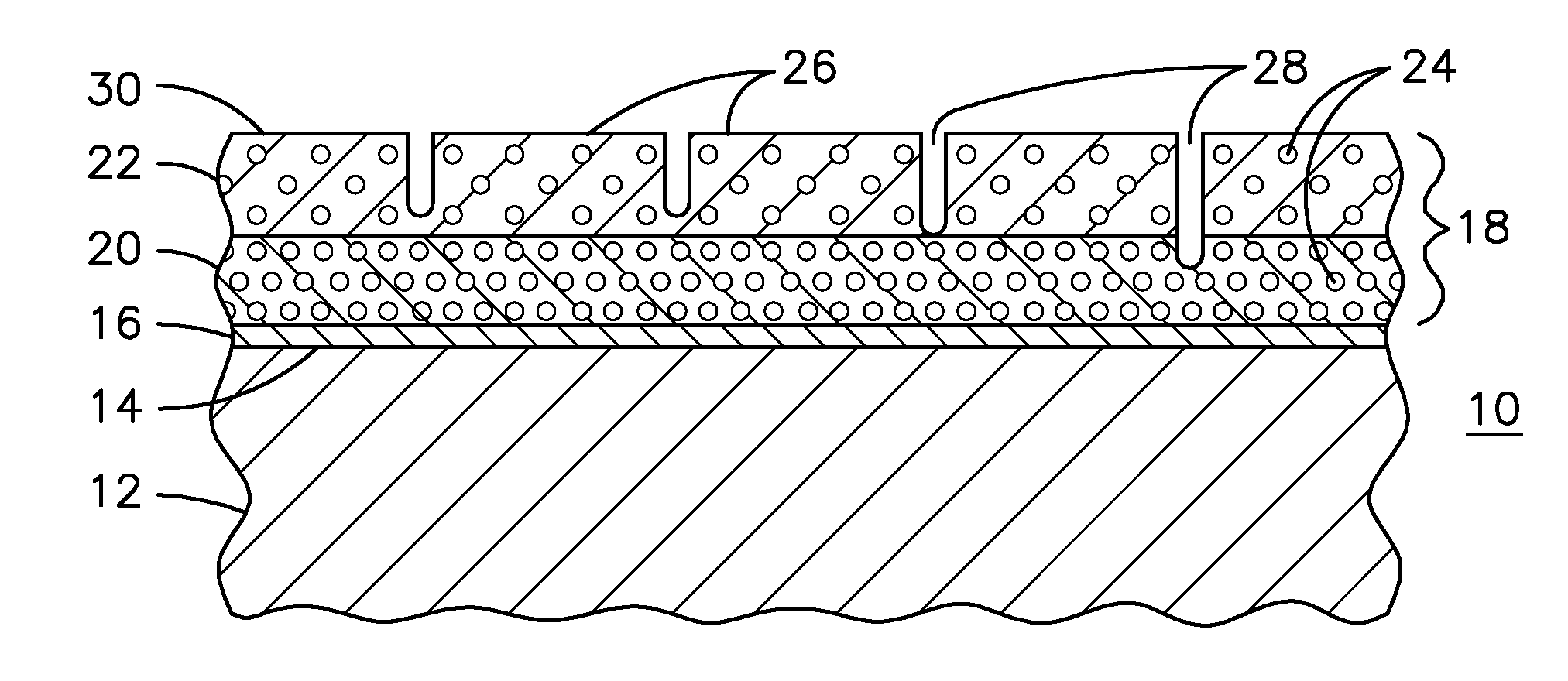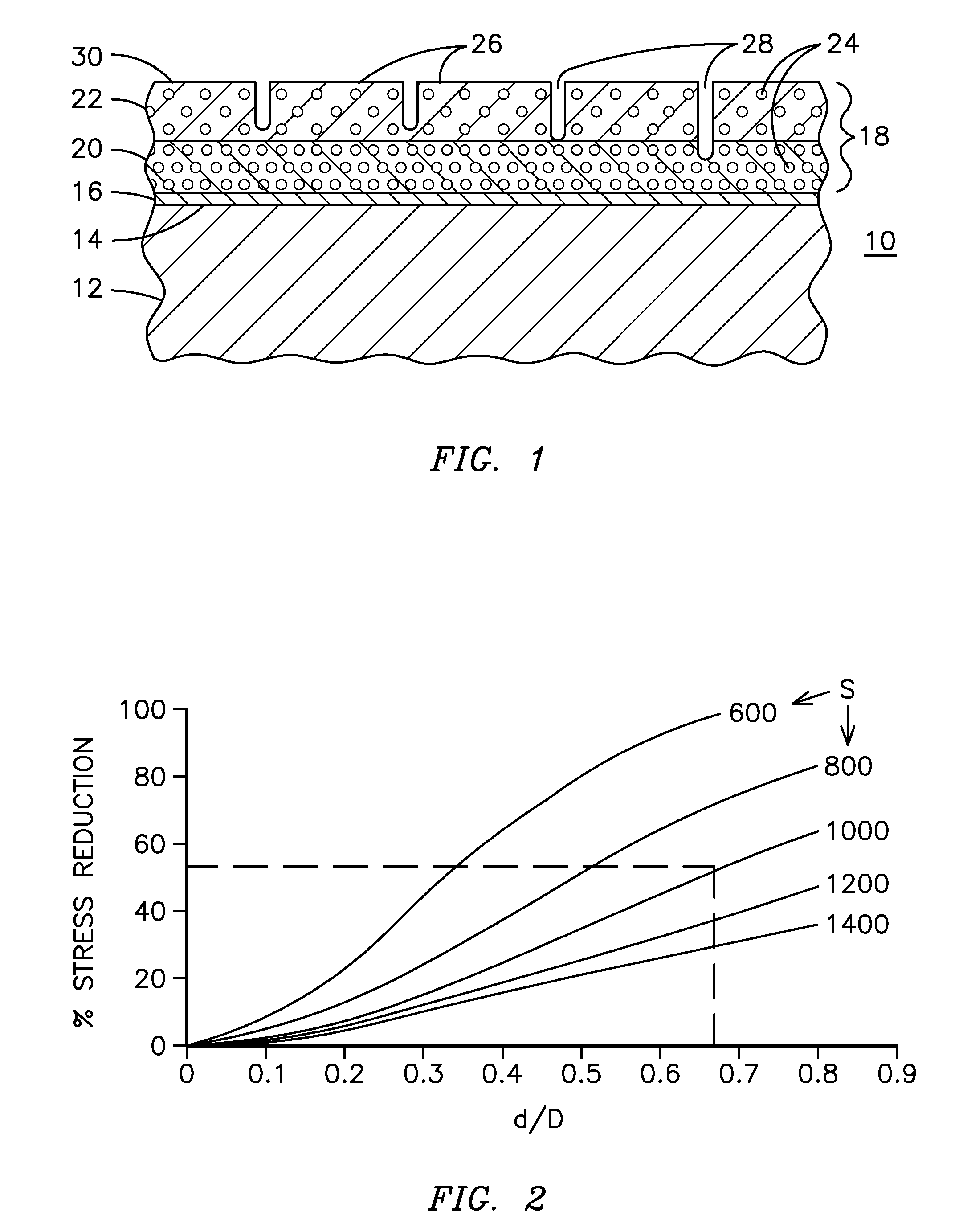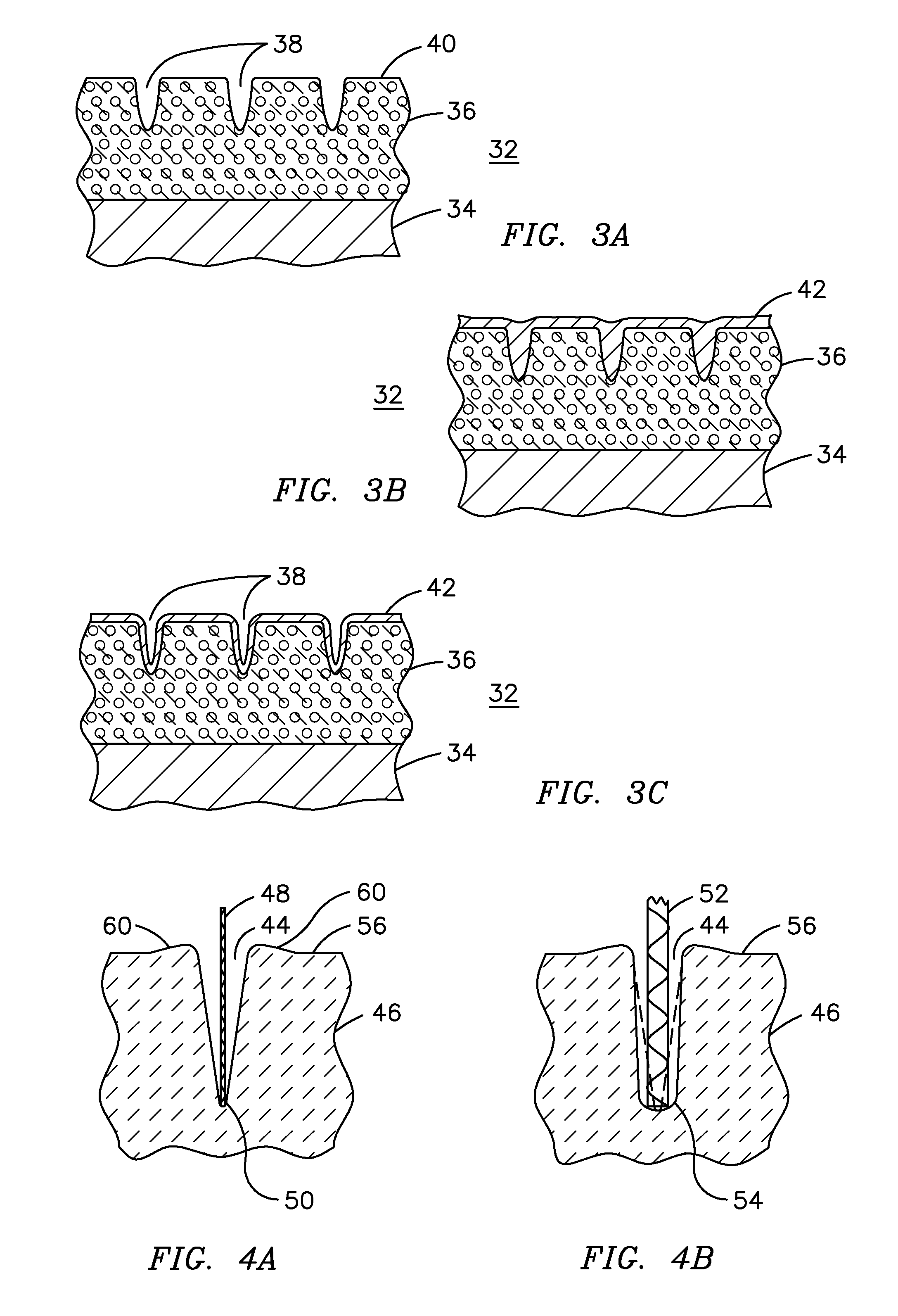Segmented thermal barrier coating
a thermal barrier and segmented technology, applied in the direction of superimposed coating process, machine/engine, natural mineral layered products, etc., can solve the problems of coating spalling, coating spalling, and superalloy materials not being able to survive long-term operation at temperatures sometimes exceeding 1,400 degrees
- Summary
- Abstract
- Description
- Claims
- Application Information
AI Technical Summary
Problems solved by technology
Method used
Image
Examples
Embodiment Construction
[0026]FIG. 1 illustrates a partial cross-sectional view of a component 10 formed to be used in a very high temperature environment. Component 10 may be, for example, the airfoil section of a combustion turbine blade or vane. Component 10 includes a substrate 12 having a top surface 14 that will be exposed to the high temperature environment. For the embodiment of a combustion turbine blade, the substrate 12 may be a superalloy material such as a nickel or cobalt base superalloy, and is typically fabricated by casting and machining. In other embodiments the substrate may be a ceramic matrix composite material or any known structural material. The substrate surface 14 is typically cleaned to remove contamination, such as by aluminum oxide grit blasting, prior to the application of any additional layers of material. A bond coat 16 may be applied to the substrate surface 14 in order to improve the adhesion of a subsequently applied thermal barrier coating and to reduce the oxidation of ...
PUM
| Property | Measurement | Unit |
|---|---|---|
| Fraction | aaaaa | aaaaa |
| Fraction | aaaaa | aaaaa |
| Fraction | aaaaa | aaaaa |
Abstract
Description
Claims
Application Information
 Login to View More
Login to View More - R&D
- Intellectual Property
- Life Sciences
- Materials
- Tech Scout
- Unparalleled Data Quality
- Higher Quality Content
- 60% Fewer Hallucinations
Browse by: Latest US Patents, China's latest patents, Technical Efficacy Thesaurus, Application Domain, Technology Topic, Popular Technical Reports.
© 2025 PatSnap. All rights reserved.Legal|Privacy policy|Modern Slavery Act Transparency Statement|Sitemap|About US| Contact US: help@patsnap.com



